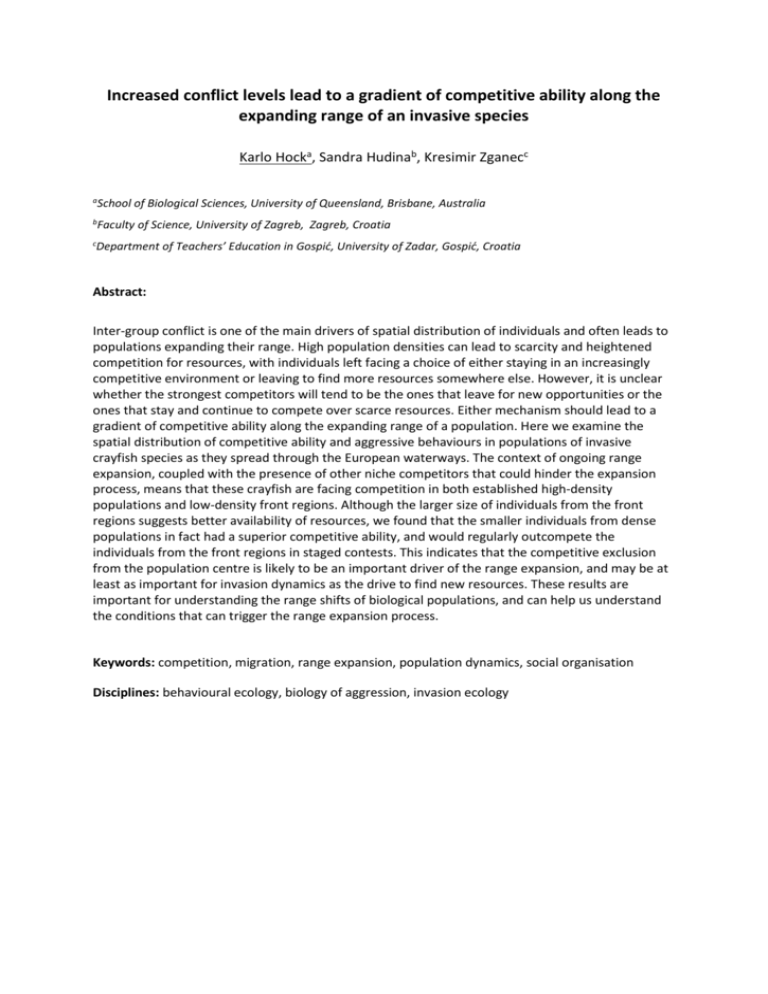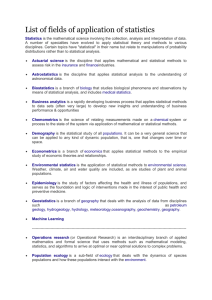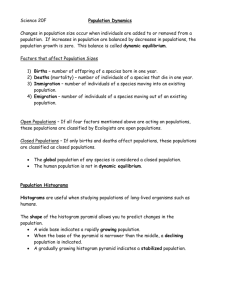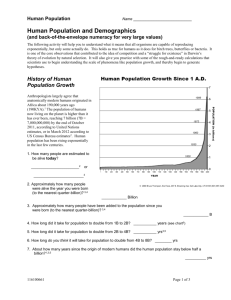Increased conflict levels lead to a gradient of competitive ability
advertisement

Increased conflict levels lead to a gradient of competitive ability along the expanding range of an invasive species Karlo Hocka, Sandra Hudinab, Kresimir Zganecc a School of Biological Sciences, University of Queensland, Brisbane, Australia b Faculty of Science, University of Zagreb, Zagreb, Croatia c Department of Teachers’ Education in Gospić, University of Zadar, Gospić, Croatia Abstract: Inter-group conflict is one of the main drivers of spatial distribution of individuals and often leads to populations expanding their range. High population densities can lead to scarcity and heightened competition for resources, with individuals left facing a choice of either staying in an increasingly competitive environment or leaving to find more resources somewhere else. However, it is unclear whether the strongest competitors will tend to be the ones that leave for new opportunities or the ones that stay and continue to compete over scarce resources. Either mechanism should lead to a gradient of competitive ability along the expanding range of a population. Here we examine the spatial distribution of competitive ability and aggressive behaviours in populations of invasive crayfish species as they spread through the European waterways. The context of ongoing range expansion, coupled with the presence of other niche competitors that could hinder the expansion process, means that these crayfish are facing competition in both established high-density populations and low-density front regions. Although the larger size of individuals from the front regions suggests better availability of resources, we found that the smaller individuals from dense populations in fact had a superior competitive ability, and would regularly outcompete the individuals from the front regions in staged contests. This indicates that the competitive exclusion from the population centre is likely to be an important driver of the range expansion, and may be at least as important for invasion dynamics as the drive to find new resources. These results are important for understanding the range shifts of biological populations, and can help us understand the conditions that can trigger the range expansion process. Keywords: competition, migration, range expansion, population dynamics, social organisation Disciplines: behavioural ecology, biology of aggression, invasion ecology











